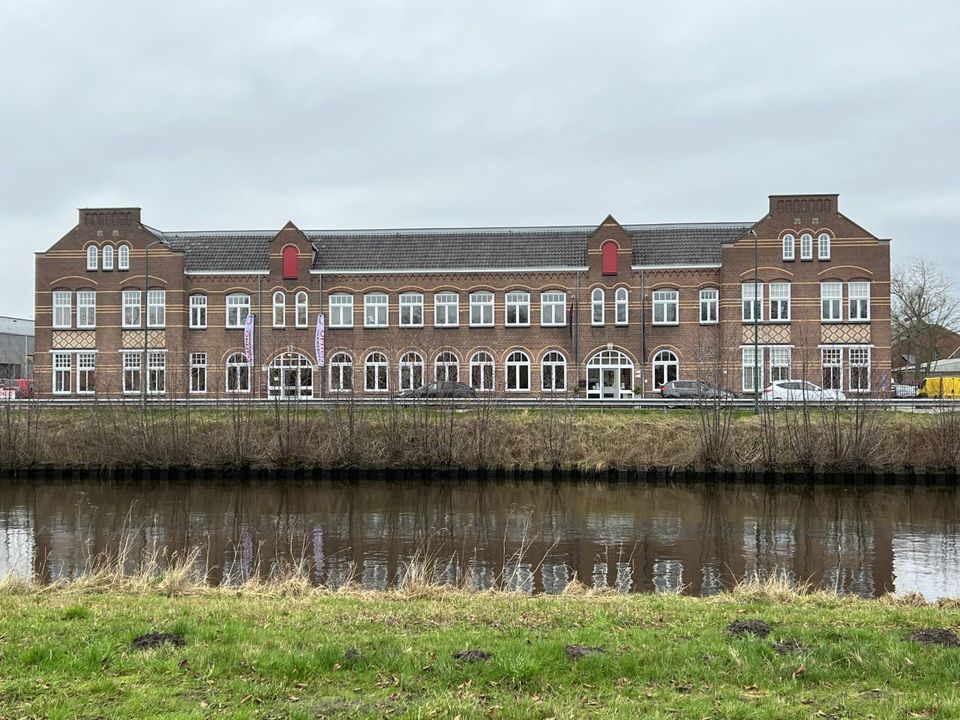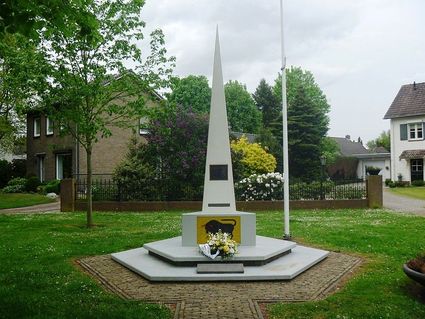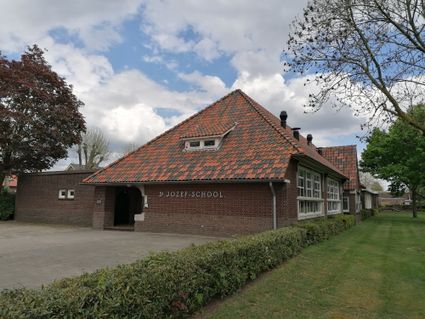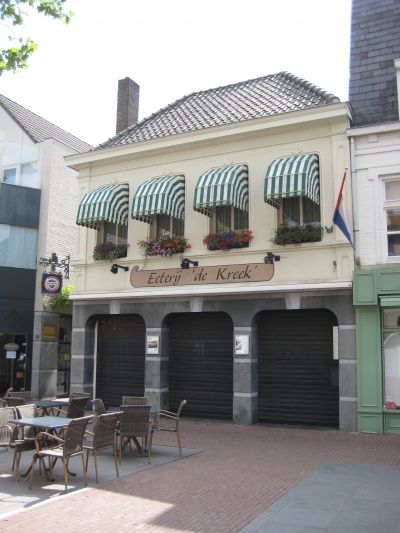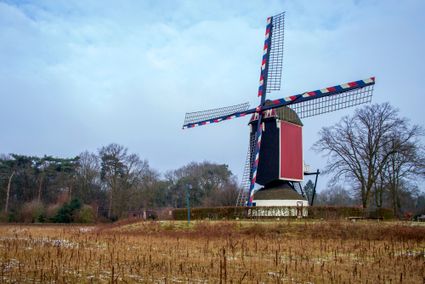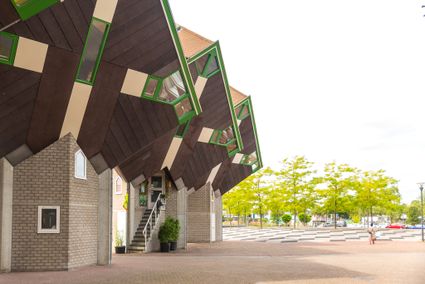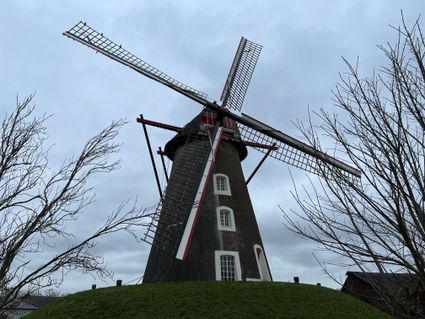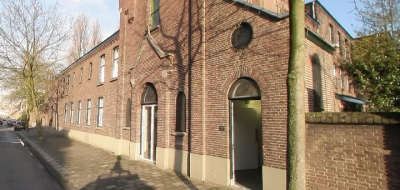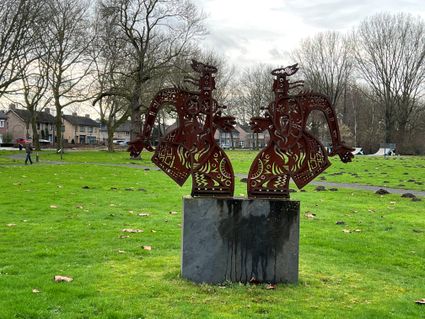Former office Klinknagelfabriek
The building dates from 1906-'07 and shows forms of transitional style. After the Second World War, the interior was modernised.
The office building has a rectangular floor plan and is two storeys high. The facade consists of a central section of thir…
The building dates from 1906-'07 and shows forms of transitional style. After the Second World War, the interior was modernised.
The office building has a rectangular floor plan and is two storeys high. The facade consists of a central section of thirteen window axes and two little pronounced corner entrances of four window axes each. The building has a flat roof with surrounding hulls, covered with improved Dutch tiles. The wall work consists of brick, which is enlivened by the use of stranded brick bands and a twill frieze. In the corner transepts, a brick mosaic has been bricked in above the iron lintels of the windows on the ground floor. Both the entrance bays of the central section and the side transepts are crowned by gables. In the latter case, the gables are blunted and closed off by a brick balustrade with wedge-shaped niches. In the third window axis on both the left and right of the central section, there is a ground-floor entrance. The southern one is the modernised main entrance. The northern one consists of an arched, clasped entrance door with overhead light with small sections of glass. The windows on the ground and first floors of the entire façade consist of casement windows with a curved skylight with small rods, or a divided round-arched skylight. The attic is lit by arched windows in the gables. The northern side façade at the back includes a door with a wooden awning. The southern gable has two window axes. On the left-hand side, there is a casement window with a three-part fanlight; on the right-hand side, there is a three-part linked window. On the first floor, there are four casement windows with three-part fanlights. To the north of the building, the factory grounds are closed off by a brick wall under a donkey back, in which the transformer house has been incorporated.
The office building is of general importance. It has cultural-historical value as an expression of a socio-economic and technical development, namely the growth of the metal industry in relation to the developments at the Zuid-Willemsvaart in the period around 1900. It is also important for the typological development of the buildings for the metal industry. It has architectural-historical value because of its simple and utilitarian form language. It has ensemble values because of the quality of the buildings in relation to the historical-spatial relationship with roads and waterways. It is important because of the architectural integrity of the exterior.
At the moment there are companies in the building.
